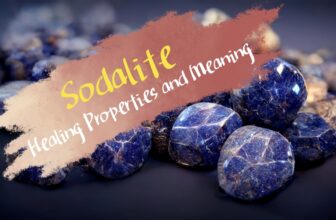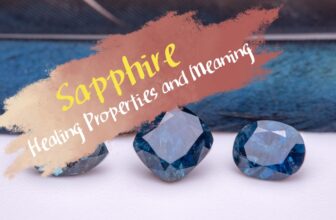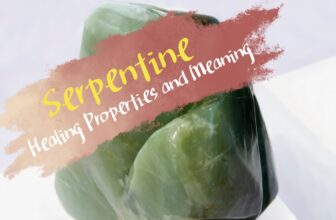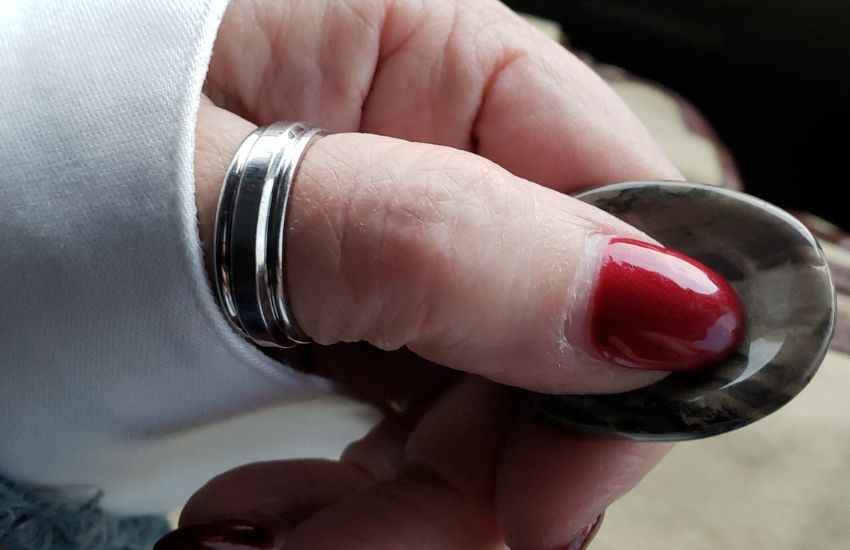
Table of Contents
Worry stones, simple yet powerful tools, have been used by cultures worldwide for their calming properties. At first glance, they might just look like smooth, polished stones, but there’s more to them than meets the eye. Let’s take a closer look at what worry stones are, their origins and the science behind their soothing touch.
What are Worry Stones?
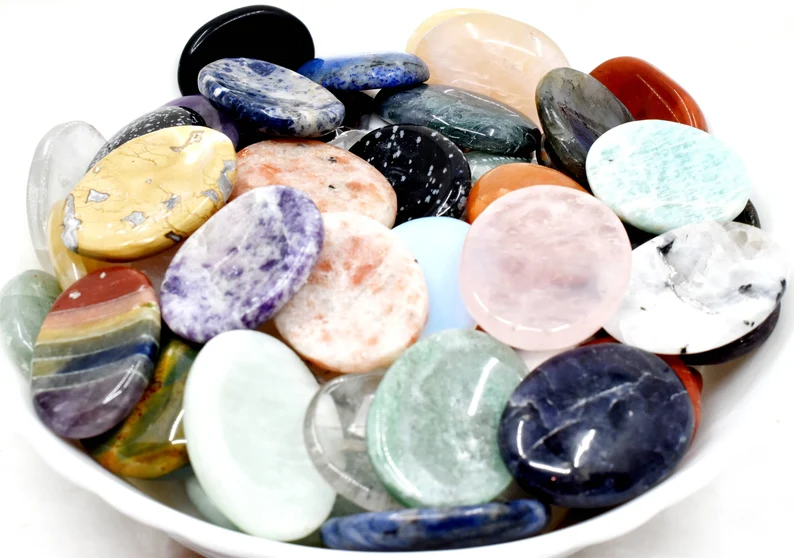
Worry stones are small, flat, polished gemstones with a thumb-sized indentation, designed to be held between the index finger and thumb and rubbed with the thumb. Rubbing them is believed to provide a soothing effect to the user.
We tend to associate worry stones with New Age practices, but did you know that worry stones originated in ancient Greek culture? These were originally simple, smooth rocks found at riverbeds or shores. But variations of worry stones have also been found in other cultures, including Ireland, Tibet, and Native America.
The meaning of the stones differed based on the culture it was viewed within. Some believed that certain worry stones have special benefits. Nowadays, many people in wellness communities use worry stones and carry them around for on-the-go relaxation.
How Do Worry Stones Work?
Worry stones are like stress-relief tools you can hold in your hand. When you touch and move your thumb across the smooth part of the stone, it helps you feel calm. It’s similar to the way some people play with fidget toys to keep their hands busy and minds at ease.
Rubbing the stone can make you feel more grounded or connected to the present, away from any troubling thoughts. It’s a little like meditation, where you focus on one specific thing as it makes you feel peaceful.
Some people also believe certain stones have special energies or healing powers, though this idea comes from tradition, not science. In simple terms, using a worry stone can be a hands-on way to help you relax and find some peace when you’re feeling stressed or anxious.
How are Worry Stones Shaped?
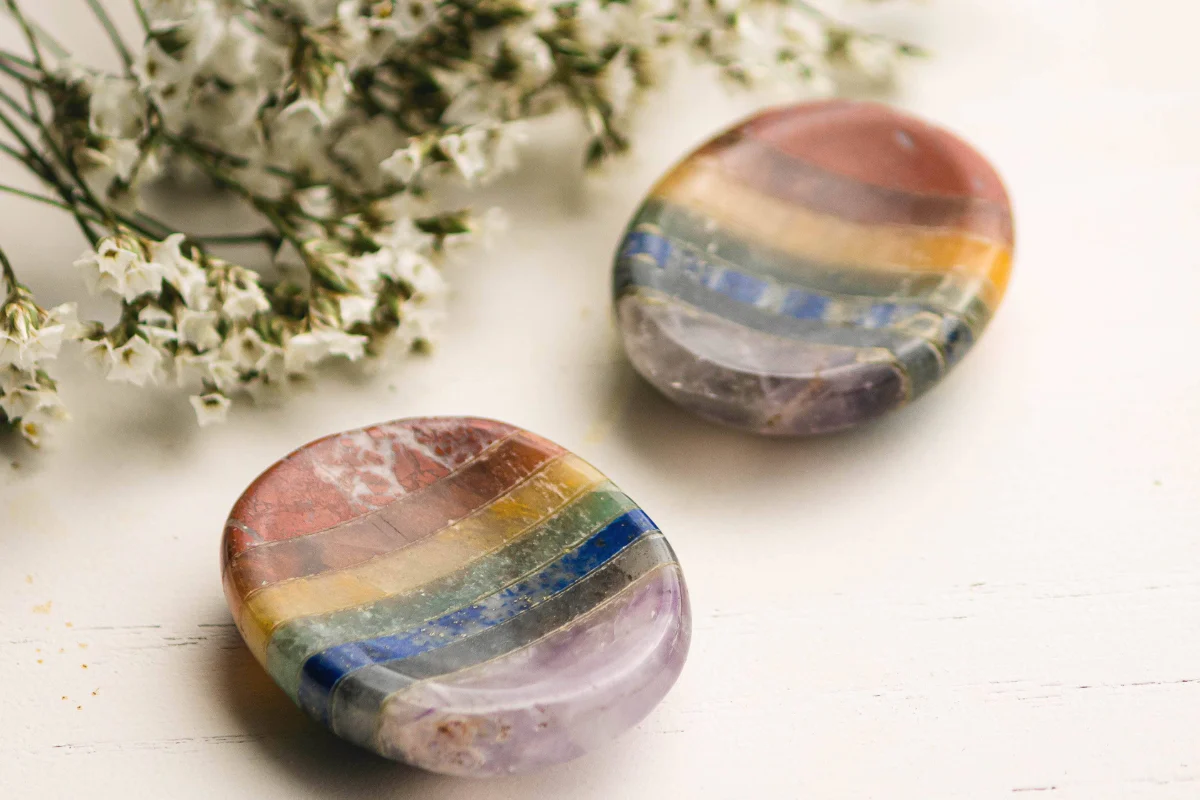
As I’ve already mentioned, worry stones are typically small, oval, and flat, designed to fit comfortably in the palm of your hand. Their shape is often similar to that of a flattened egg or a pocket-sized pebble. The most distinguishing feature is a smooth indentation or groove, usually in the center of the stone, designed for the thumb to rub over.
This thumb-sized indentation is what provides the soothing effect when the stone is rubbed. In terms of size, worry stones generally range from 1 to 2 inches in length, making them easy to carry in a pocket or purse.
The slimness, typically less than half an inch in thickness, adds to their portability. While the oval shape is most common, some worry stones might have slight variations, but the primary criteria are that they’re smooth, flat, and fit comfortably between the fingers.
What are Worry Stones Made Of?
Worry stones are often made from various types of shiny, polished stones. Here’s a look at some of the most popular options:
- Quartz: A versatile and widely loved stone. Known for amplifying energy and clarity, varieties include the heart-healing rose quartz, intuition-boosting amethyst, and energy-clearing clear quartz.
- Jasper and Agate: Belonging to the chalcedony family, they’re renowned for their grounding and stabilizing properties. Their plethora of colors and patterns add to their appeal.
- Obsidian: Formed from volcanic activity, this stone offers protective qualities. Snowflake obsidian, with its black base and white spots, is believed to bring balance to the mind and body.
- Lapis Lazuli: This royal blue gem is prized for enhancing wisdom and inner truth, with its gold flecks enhancing its beauty.
- Moonstone: Glowing like moonbeams, moonstone is revered for its connection to intuition and emotional balance.
- Aventurine: A shimmering green gem, it’s believed to bring luck and prosperity while also soothing negative emotions.
- Sodalite: With its deep blue tones, sodalite is associated with enhancing logic and intuition, bringing a sense of inner peace.
- Hematite: Resembling shiny metal, hematite is sought after for its grounding and balancing energy, helping you to stay connected to the earth.
While many prefer these gemstones for their beauty and feel, some people choose simple, polished river rocks. This is because sometimes it’s the meaning or memory attached to a stone that matters more than its type or look.
What are Worry Stones Used For?

Worry stones are helpful tools that can help people with handling their feelings and habits. Their main benefit is that they help reduce stress. When you touch and rub a worry stone, it gives you something solid to focus on, helping to take your mind off worries and making you feel more relaxed.
Holding and rubbing the stone also keeps you connected to the present moment, stopping your mind from wandering too much. Some believe that rubbing the stone might even hit spots on the hand that make the brain release feel-good chemicals, boosting mood.
Worry stones are great for distracting a restless mind and they can also be used to stop bad habits. For instance, if someone feels like smoking or thinking negatively, playing with a worry stone can steer them away from that urge, giving them a better way to cope.
Worry Stones in Jewelry
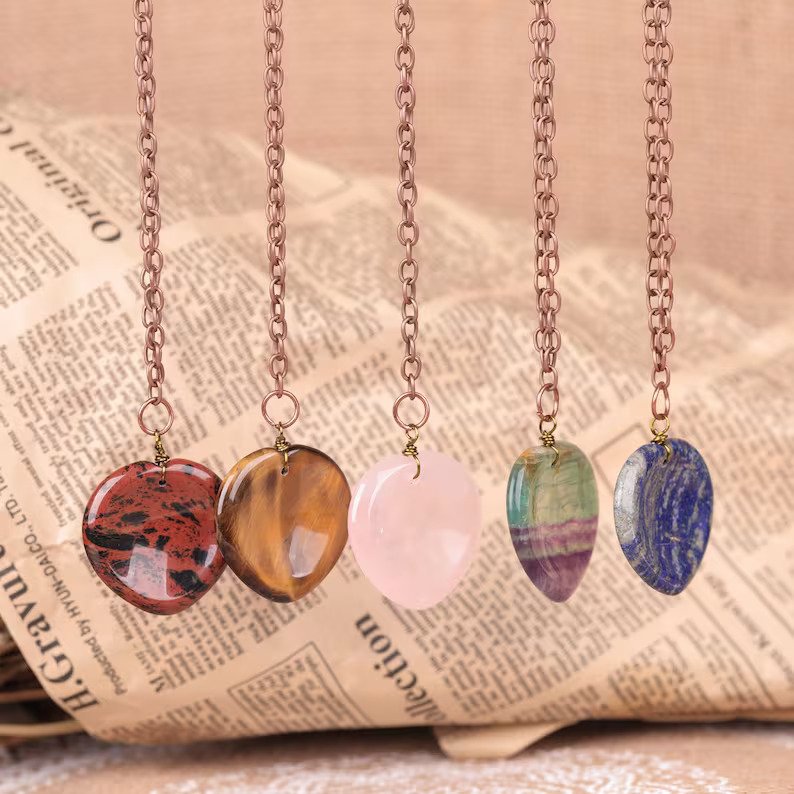
Worry stones are popularly used in jewelry, since they’re both stylish and calming. Here’s how they’re often incorporated:
Pendants
Many people choose to wear worry stone pendants as it’s a handy way to keep them close. When worn around the neck, it’s easy to reach the stone if you’re feeling stressed or anxious. It’s not just about the calming effect; these pendants can also be a great conversation starter because of their unique appearance.
Rings
Rings with embedded worry stones are a trendy choice. It’s discreet, so you can use it anywhere – whether you’re at a meeting or on public transport. It also adds a unique touch to the design of the ring itself.
Bracelets
Bracelets can either have a single, large worry stone as a focal point or several smaller ones strung around. Either way, with the stones resting against the wrist, it’s easy to feel their calming presence.
Brooches or Pins
If you want to add a touch of elegance to your outfits or bags, brooches or pins with worry stones are perfect. They stand out, and having the stone there means you can touch it whenever needed.
How Can I Use a Worry Stone?
If you’re planning to use a worry stone, it’s important to know how you can get the most out of it. Here’s what you can do:
- Choosing Your Stone: Pick a crystal that you feel drawn to for its special qualities and healing properties.
- Initial Connection: Hold the stone and close your eyes. Notice its weight and warmth. Spend at least a minute on this.
- Movement: Shift the stone around in your hand. If it has an indent, rub it with your thumb. Listen to any sounds it might make.
- Visual Connection: Open your eyes. Observe the stone’s colors, patterns, and reflections.
- Reconnect with Feeling: Focus on the stone’s texture and presence in your hand.
- Deepening the Experience: Incorporate deep breaths, chants, or mantras as you engage with the stone.
When to Use Worry Stones
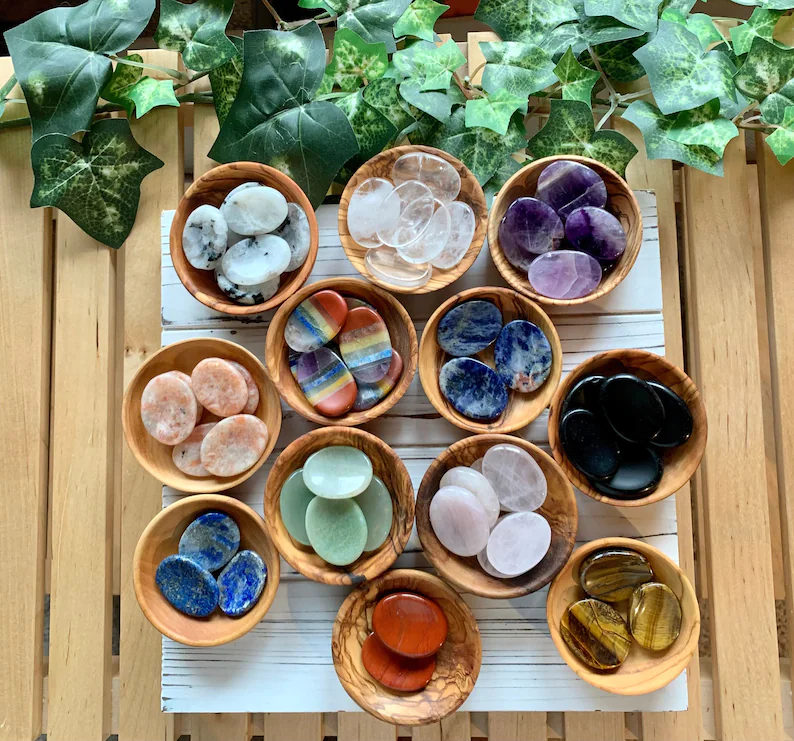
When you’re feeling overwhelmed or stressed, a worry stone can be a handy tool. Its solid feel and texture can immediately soothe you and might even help you feel less sad. If anxiety starts to bubble up or you feel a panic attack coming on, the grounding feel of the worry stone can help comfort you and keep your mind off the panic.
For those who meditate, these stones can act as a calming center point, much like a mala. They not only help quiet the mind but can also be chosen based on the kind of energy you want to tap into. At night, before sleep, rubbing the worry stone can shift your focus from daily distractions to calming thoughts, potentially leading to better sleep over time.
When you need to have a tough, challenging conversation with someone, having a stone with you can reduce some nervousness, helping you stay calm, clear-headed, and kind in your responses. Whenever you feel out of sorts, a simple touch or rub can bring back a sense of calm.
Wrapping Up
While worry stones might not work for everyone, many find them comforting. Some people like them for their spiritual aspects, while others just enjoy the act of holding and rubbing them. They’ve become a popular item in the world of relaxation and self-care.
Related articles
Gemstones in the Bible – Symbolism and Significance
Do I Need Moonstone? Meaning and Healing Properties
Do I Need Sunstone? Meaning and Healing Properties




